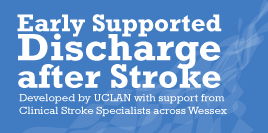 |
Pain |
Neuropathic pain Recommendations 6.19.3.1
A. Every patient whose pain has been diagnosed by someone with appropriate expertise in neuropathic pain should be given oral amitriptyline, gabapentin or pregabalin as first-line treatment:
- amitriptyline: start at 10mg per day, with gradual upward titration to an effective dose or the person’s maximum tolerated dose of no higher than 75mg per day (higher doses could be considered in consultation with a specialist pain service)
- gabapentin: use 300mg twice daily increasing to a maximum of 3.6g per day; pregabalin: start at 150mg per day (divided into two doses; a lower starting dose may be appropriate for some people), with upward titration to an effective dose or the person’s maximum tolerated dose of no higher than 600mg per day (divided into two doses)
B. Based on both the early and subsequent regular clinical reviews:
- if there is satisfactory improvement, continue the treatment; consider gradually reducing the dose over time if improvement is sustained
- if amitriptyline as first-line treatment results in satisfactory pain reduction but the person cannot tolerate the adverse effects, consider oral imipramine or nortriptyline as an alternative
C. If satisfactory pain reduction is not achieved with first-line treatment at the maximum tolerated dose, offer treatment with another drug instead of or in combination with the original drug:
- if first-line treatment was with amitriptyline switch to or combine with oral pregabalin
- if first-line treatment was with pregabalin, switch to or combine with oral amitriptyline
Neuropathic pain Sources 6.19.3.2
A-C. National Institute for Health and Clinical Excellence 2010c
Musculoskeletal pain Recommendations 6.19.4.1
A. Any patient with musculoskeletal pain should be carefully assessed to ensure that movement, posture and moving and handling techniques are optimised to reduce the pain
B. Any patient continuing to experience pain should be offered pharmacological treatment with simple analgesic drugs taken regularly
Musculoskeletal pain Sources 6.19.4.2
A-B. Consensus
Shoulder pain and subluxation Recommendations 6.19.2.1
A. Every patient with functional loss in their arm should have the risk of developing shoulder pain reduced by:
- ensuring that everybody handles the weak arm correctly, avoiding mechanical stress and excessive range of movement
- avoiding the use of overhead arm slings
- correct positioning of the arm
B. Every patient with arm weakness should be regularly asked about shoulder pain
C. Every patient who develops shoulder pain should: have its severity assessed, recorded and monitored regularly have preventative measures put in place be offered regular simple analgesia
D. Any patient who has developed, or is developing, shoulder subluxation should be considered for functional electrical stimulation of the supraspinatus and deltoid muscles
E. In the absence of inflammatory disorders, intra-articular steroid injections should not be used for post-stroke shoulder pain
Shoulder pain and subluxation Sources 6.19.2.2
A-C. Consensus
D. Fil et al. 2011; Koyuncu et al. 2010
E. Kalita et al. 2006; Laske et al. 2009
 |